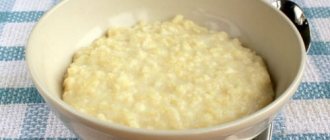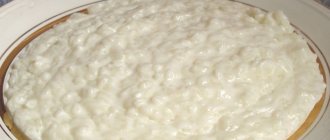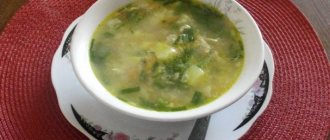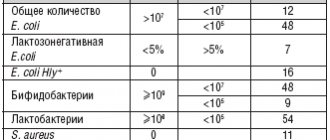History of millet porridge
Millet is the peeled fruit of a cereal called millet. Millet began to be grown and consumed as food back in the 5th century BC. in Mongolia and China. The ancient Chinese prepared not only porridge from it, but also sweet dishes, kvass, flour and soups.
Gradually, the plant spread throughout the world, and millet became the basis of nutrition in Asia, Southern Europe and North Africa, and from the 3rd century BC. millet began to be grown in the territories of modern Russia. Before the advent of potatoes, the most popular dish in all families, regardless of income level, was millet porridge.
Porridge made from “golden grains” was considered a mandatory dish during important events in the life of a family - it was served on the table on both joyful and sad occasions. Millet porridge was also consumed during important fasts, filling the body with vitamins and fulfilling an important ritual role.
When concluding a peace treaty, the princes necessarily cooked millet porridge together and ate it in front of the squads and people, thereby confirming peace and friendship. Without this ritual, the contract was not considered valid.
Composition and calorie content
Nowadays millet cereals are not as popular as they used to be. But, if you look at its chemical composition, you will involuntarily think about introducing this product into your diet.
The composition of millet cereal is diverse: proteins, carbohydrates, fats, fiber, starch, pectin. Micro- and macroelements are present in large quantities: magnesium, iron, fluorine, calcium. Vitamins A, PP, E and group B are present.
| Calorie content per 100 g (porridge with water) | 90 kcal |
| Squirrels | 3.5 g |
| Fats | 0.4 g |
| Carbohydrates | 21.4 g |
WHEAT GREATS: SEMONA, BULGUR, COUSCOUS
Wheat is used to make several types of cereals, none of which should be eaten if you are gluten intolerant. And in terms of nutritional value, wheat cereals are nothing special.
The most vitamin-rich of them is bulgur. This is the core of a wheat grain, which is obtained by steaming the grains and then drying them in the sun. This preserves the maximum amount of nutrients. After drying, the bran is separated from the grains, and only then the grains are slightly crushed. Contains 350 kcal per 100 grams of product. The taste of bulgur is best revealed when fried in butter, which is not very suitable for dietary dishes, because the calorie content doubles!
Processing the grain to create wheat grits involves grinding to remove the bran and germ. As a result, the most useless part of the grain remains, which is ground. The nutritional value of such porridge is average, and in case of gastrointestinal diseases, eating it is completely prohibited.
Semolina is prepared from the most refined wheat grains, also finely ground. Calorie content approximately 340 kcal. When eating semolina porridge, carbohydrates are very quickly converted into glucose, so diabetics and people prone to obesity should not eat it. Semolina contains another “pitfall” - phytin. It binds calcium and removes it from the body. Accordingly, semolina is contraindicated for children under three years of age. But the same phytin improves the condition of ligaments, which is why semolina porridge is recommended for older people.
Couscous is semolina rolled in flour. Apart from the higher gluten content, there is no significant difference from semolina.
The benefits of millet porridge
“Millet porridge is an extremely healthy product for people of any age,” says gastroenterologist-hepatologist Olga Arisheva . — Millet porridge is a source of “slow” carbohydrates and is rich in fiber. Millet also has a lipotropic effect - it prevents the deposition of fat and absorbs toxins in the body.
The vitamins and minerals contained in millet normalize blood pressure, strengthen blood vessels, reduce the risk of stroke, normalize the functioning of the liver and digestive system, and help improve skin tone and smooth out wrinkles.
What cereals help with constipation?
Porridges contain a large amount of vitamins and microelements that are necessary for normal human life. Moreover, each cereal has its own distinctive characteristics.
Some cereals speed up the natural process of bowel movements, while others, on the contrary, stop it. For example, rice dishes reduce the motor activity of the gastrointestinal tract and lead to hardening of stool in the intestines.
That is why you need to learn more about which cereals are useful for constipation and which are not.
Harm of millet porridge
- Given the large number of beneficial properties of millet porridge, you shouldn’t lean too much on it either - this can lead to constipation. That is why it is recommended to exclude it from the menu for people suffering from digestive problems. In rare cases, an allergic reaction occurs to millet porridge, notes Olga Arisheva .
Also, the consumption of millet porridge should be limited to people with thyroid diseases, since millet contains a small amount of compounds that interfere with iodine metabolism.
What cereals can be given to children for constipation and which ones should not be included in the diet
It's not just adults who suffer from constipation. Problems with bowel retention often occur in young children. When this happens, parents need to know exactly which cereals are suitable for children for constipation and which are not.
What you need to know about cereals
All porridges can be conditionally divided into 2 groups. The first consists of products that can have a bonding effect. This does not mean that they are harmful to health. In case of diarrhea, their inclusion in the child’s diet often helps to solve the problem quickly and without harm to the child’s health. But if the child has the opposite situation - constipation, then they should be excluded from the menu for a while.
The second group is cereals that have a neutral or mild laxative effect on the intestines. In case of stool retention, they should prevail in the daily diet of children.
Brief characteristics of various cereals
Buckwheat, semolina, millet, oat and barley cereals are considered traditional for the Slavic peoples. Over time, rice and pearl barley were added to them. Recently, flaxseed porridge has become popular, the benefits of which have not yet been proven by scientific research. But the old, good and healthy corn grits have almost disappeared from children's diets.
Buckwheat
Buckwheat porridge is the safest product for a child’s body. It contains a lot of fiber and polyunsaturated fats. It is one of the first to be introduced into the diet of babies at the beginning of complementary feeding. Buckwheat is considered one of the best preventive remedies against stomach ulcers and other gastrointestinal diseases. Regular consumption of buckwheat for constipation has a positive effect on intestinal motility.
Acting as a mild natural laxative, buckwheat can improve bowel movements and relieve the child not only from recurring constipation, but even from chronic constipation. Speculation that buckwheat can cause stool retention is unfounded.
Corn porridge
Corn porridge is also a good and safe option for starting complementary feeding for babies, although it is used relatively rarely today.
The main reason is that too much corn grits can cause diarrhea. But with constipation, its ability to have a laxative effect can and should be in demand.
With its help, you can restore the process of defecation without the use of an enema or laxatives.
Millet porridge
Millet porridge is another product that has a positive effect on stool retention. Millet has dietary fiber, which, when it enters the intestine, irritates its walls, stimulating bowel movements. In addition, it is easily digested, but at the same time a person retains a feeling of fullness for a long time.
Oatmeal
Oatmeal for constipation is a two-faced product. It can either quickly solve a bowel problem or make the situation worse. It all depends on the cooking method.
Prepared from whole grains, it is no worse than buckwheat and is capable of establishing trouble-free excretion of feces from the body in a short time. But if you cook it from flour, then the oatmeal itself can cause constipation.
Even pediatricians often forget about this property, recommending dry milk formulas with the addition of oatmeal for feeding infants who have problems with difficult bowel movements.
Barley porridge
Pearl barley porridge is often recommended at the initial stage of constipation to normalize stool. But you need to take into account that pearl barley contains gluten, which has a gluing ability. If a child has problems with the gastrointestinal tract or a tendency to obesity, then it is better to avoid barley for constipation. And getting children to eat it is not at all easy.
Semolina
Semolina porridge is the most popular baby food option. However, if a child has a problem with stool, it is one of the most dangerous. Semolina contains a relatively large amount of starch, which has a binding effect on the stomach. Therefore, often young children whose mothers overfeed semolina experience regular constipation.
Rice porrige
All caring mothers know about the adhesive properties of rice. Therefore, the question of whether rice can be used for constipation in young children is not even considered by them. But in vain. If you know which varieties of rice can be used to ease bowel movements and which cannot, then rice porridge can bring considerable benefits.
White polished rice should really be excluded from the diet of a constipated person so as not to aggravate the situation. But brown or red rice can be of considerable benefit if the cause of constipation is food or other toxic poisoning.
Flaxseed porridge
Fans of using flaxseed porridge for constipation would do well to first find out what it is made from. For its preparation, flax seeds are used.
The seeds themselves are actually used in folk medicine as an effective laxative.
But how useful they will be for constipation after flaxseed oil is squeezed out of them and turned into cake, it’s hard to say - there are no serious scientific works on this issue yet.
How to cook properly
When discussing the benefits or harms of various cereals for gastric motility, one must take into account that even the healthiest dish ceases to be healthy if it is not prepared correctly. To get rid of constipation, when cooking for children you must:
- cook dishes only in water (do not use fatty broths);
- do not cook with milk (otherwise fiber loses its ability to bind water in the intestines);
- do not add sugar (it causes fermentation in the stomach);
- Introduce porridge into the diet no more than once a day (better for breakfast, acceptable for lunch, harmful for dinner);
- Their portion for babies should be limited to 2-3 tablespoons.
By following these simple rules and knowing which product will be beneficial if delayed, and which will do more harm than help, you can quickly and unnoticed by your child to save him from this unpleasant problem.
Source: https://zaporinfo.ru/produkty-ot-zapora/kakie-kashi-pri-zaporah-mozhno/
Use in cooking
Millet porridge with pumpkin in a pot
A simple recipe for a bright, satisfying and healthy dish. Porridge cooked in a pot in the oven turns out tender, light and aromatic
Photo: shutterstock.com
| Millet | 150 g |
| Pumpkin | 250 g |
| Milk | 500 ml |
| Sugar or honey | 3 tbsp. l. |
| Salt | 1 pinch |
| Butter | 30 g |
Peel and seed the pumpkin and cut it into cubes. Rinse the millet in cold water and pour boiling water over it to get rid of its inherent bitterness. Pour milk into a saucepan and bring to a boil. Add pumpkin to boiling milk and cook for about 5 minutes.
Next add salt and millet. Cook covered over low heat for 10 minutes, stirring occasionally. Add sugar or honey.
Fill the pots with porridge and add a piece of butter to each. Cover the pots with a lid and bake in an oven preheated to 180 degrees for 30-40 minutes.
Share your recipe
Send the recipe for your signature dish to the mail "Komsomolskaya Pravda" will publish the most interesting and unusual ideas
Share
Millet porridge pancakes
Millet porridge pancakes are an affordable and tasty dish. They are prepared simply and quickly and turn out fluffy and appetizing.
Photo: pixabay.com
| Milk | 300 ml |
| Millet | 100 g |
| Chicken egg | 2 pcs. |
| Flour | 50 g |
| Sugar | 1 tbsp. l. |
| Baking powder | 1 tsp. |
| Vegetable oil | 2 tbsp. l. |
Pour milk over the pre-washed millet and put on fire. After boiling, add salt and cook over low heat for 20-25 minutes. Cool the porridge to room temperature. Add eggs and sugar and mix. Add flour and baking powder, stir until smooth.
Heat vegetable oil in a frying pan and add pancakes using a spoon. Fry over moderate heat for 3-4 minutes until golden brown.
show more
Porridge for constipation
Following a diet is a good way to eliminate and prevent constipation. To cope with this problem, you need to choose laxative products. Properly prepared porridge will help with constipation. However, not all of them are useful for stool retention. There are also those who, on the contrary, act as provocateurs for disrupting normal bowel movements.
Properties of cereals
Porridges for constipation in adults are effective because they contain a large amount of fiber. It is not digested, but when it enters the intestines, it promotes the formation of fluid, which helps soften the stool. In addition, cereals contain elements necessary for the functioning of the gastrointestinal tract.
The natural product can be consumed daily without harm to health. It gently eliminates the problem without causing addiction, unlike many drugs. This approach to treatment is useful for different age groups - children, young and elderly people.
What symptoms indicate the need to restore normal stool:
- irregular bowel movements, absence of stool for more than 2 days;
- discomfort in the intestinal area;
- feeling of fullness, periodic nausea;
- loss of appetite;
- increased gas formation.
Constipation can be of spastic or atonic type. The latter is difficult to eliminate on your own, so you need to consult a doctor to prescribe special treatment. With the spastic type of pathology, it is important not only to maintain physical condition, but also to eliminate psychological factors that often cause its occurrence.
Healthy cereals
Not all cereals for constipation have the same effect. Some only aggravate the condition, so you should consider what foods you can eat in the absence of bowel movements.
What cereals are good for constipation:
- oatmeal;
- buckwheat;
- wheat;
- corn;
- barley;
- linen and others.
It is impossible to say exactly which porridge is better for weakening, because it depends on the characteristics of the body. Each cereal will be useful if you prepare and consume it correctly.
If you have stool retention, eat brown and gray cereals, which include coarse fiber. The latter stimulates natural emptying, providing a laxative effect.
You should be careful about your diet when treating your intestines, because some cereals cause constipation, so you will need to avoid them.
Oatmeal
Oatmeal for constipation will be very useful as a dietary product. It contains a lot of nutrients with a minimum of calories. If the gastrointestinal tract malfunctions, oatmeal can become part of the diet, as it has a laxative effect.
Features and properties of oatmeal for constipation:
- activates the gastrointestinal tract, stimulates digestion, removing toxins;
- contains elements necessary in the diet of children and adults, so it is recommended to have breakfast with this porridge;
- useful for various poisonings, as it contains compounds that remove harmful substances, including poisons, from the body;
- the substances in the composition have a good effect on the immune system;
- oatmeal is a powerful source of energy that accelerates the absorption of carbohydrates;
- reduces gas formation, helps get rid of bloating;
- is part of the diet for severe gastrointestinal pathologies.
You cannot cook cereal with dairy products, only with water. You can use flakes or grains. To prepare, you need to pour 500 ml of liquid into a glass of cereal. Cook until boiling, then reduce heat. The whole process takes 15 minutes. Afterwards the dish is infused for 5 minutes. You can use it with vegetable oil, stirring the porridge until smooth.
Buckwheat
Buckwheat is very useful for constipation in adults due to its fiber content. It is also recommended for pregnant women and young children. It is better to eat it for breakfast, recharging your energy for the whole day. Buckwheat for gastrointestinal disorders, when consumed daily, prevents stool retention.
Why buckwheat is useful for constipation:
- activates the intestinal mucosa, which begins to work faster;
- contains coarse fibers that help eliminate toxins and waste;
- accelerates the absorption of nutrients;
- normalizes stool, preventing intestinal disorders.
Buckwheat for constipation is prepared with water in a ratio of 1:2. You can also steam it with boiling water, leaving it until cooked. The second method is more useful, as it retains all the properties of the cereal. Porridge can be eaten daily for breakfast.
Wheat
Wheat porridge is one of the ways to restore stool for people with a sensitive digestive tract. Regular consumption will ensure normal intestinal function. It is wheat porridge that is used in alternative medicine to treat many gastrointestinal diseases.
Cereals can be prepared for children and adults; they do not cause allergies and are quickly digested. For greater effect, wheat porridge for constipation is combined with pumpkin or dried apricots.
What other beneficial properties does it have:
- suppresses hunger well with low calorie content;
- helps the body recover after serious illnesses;
- restores microflora;
- fights the effects of dysbiosis.
It should be excluded in case of pathologies of the thyroid gland, because the composition contains components that inhibit the absorption of iodine. It is contraindicated in case of reduced acidity of gastric juice, increased gas formation, and in the postoperative period.
Wheat porridge is prepared simply:
- The cereal is washed and filled with water (for 1 cup of cereal, 2.5 cups of liquid).
- Cook over low heat until done.
- Used with vegetables and vegetable oil.
Pearl barley
Barley for constipation is no less effective. It contains vitamins, amino acids, and microelements that help improve intestinal function.
Features of pearl barley:
- restores normal digestion;
- improves metabolic processes;
- promotes easy bowel movement naturally.
Cereals have some contraindications. It should not be eaten with hyperacid gastritis, that is, with increased acidity of gastric juice. It can also be harmful for peptic ulcers. It is not recommended for pregnant women to eat pearl barley, as there is a risk of allergies.
Corn
Corn porridge for constipation is prepared in water. You should take polished grains. You can add vegetable oil to the finished dish. Suitable for daily diet.
In what cases will corn porridge be useful for constipation:
- irregular bowel movements caused by dietary habits;
- tendency to gas formation and fermentation;
- dysfunction of the digestive system;
- impaired absorption of nutrients.
Regular addition of corn to your diet will help speed up the restoration of normal digestion. The product also has a positive effect on the psychological state, which is also useful for the gastrointestinal tract, because many of its problems are provoked by stress and anxiety.
Barley
When consumed frequently, barley porridge can improve the function of the gastrointestinal tract, normalize the microflora, and eliminate the factors causing the disorder. Milk porridges are not suitable for constipation, and this dish is no exception.
Barley is prepared in water or vegetable broth. The dish is seasoned with vegetable oil; you can add raw and boiled vegetables.
To enhance the laxative effect, you can combine it with dried apricots, prunes and dried apples.
Beneficial properties of barley:
- a source of fiber with coarse fibers that help the functioning of the gastrointestinal tract and help cleanse toxins;
- source of energy for people with diabetes;
- contains vegetable protein, which is needed by children, pregnant women, and athletes;
- lowers cholesterol concentrations, important for the prevention of cardiovascular pathologies.
Barley porridge and pearl barley are the same product, namely barley. For barley, it is crushed, and for pearl barley, it is cleaned and polished.
Linen
Flaxseed porridge acts as a mild laxative for constipation. The product improves metabolic processes, promotes healing of the gastrointestinal mucosa, increases the body's resistance, and generally improves digestive processes.
It is not recommended to include it in your daily diet. The composition contains cyanogenic glycosides, which are poisonous. In small doses they do not cause any harm, but if they begin to accumulate in the body, there may already be consequences.
Cereals also have some contraindications:
- intolerance and allergies;
- pathologies of the genitourinary system;
- gastrointestinal diseases in the acute period;
- urolithiasis.
Contraindicated cereals
Some cereals should not be eaten if you are constipated, as they have the opposite effect, causing constipation. They should be avoided during therapy. For example, rice contains a large amount of starch, which has fixing properties. Semolina porridge will also not help with constipation, but will only make it worse.
Constipation occurs from eating corn, which is possible when cooking stale cereals. This can be caused by intolerance to the product and its excessive consumption.
When not recommended to use
Using cereals to relieve constipation is effective if you follow the recommendations and prepare the cereals correctly. There are a number of conditions when eating cereals for constipation in adults and children is not recommended, because they can cause other disorders.
Porridge for constipation should not be consumed in conditions such as:
- acute inflammatory and peptic ulcer diseases of the gastrointestinal tract;
- acute pancreatitis;
- severe pathologies of the thyroid gland;
- individual intolerance to certain cereals;
- increased tendency to form blood clots.
There are a number of conditions in which you need to urgently visit a doctor:
- no bowel movements for more than a week;
- severe abdominal pain;
- there is constant nausea;
- the stomach is very distended;
- no appetite;
- there is blood in the stool;
- repeated vomiting occurs;
- weight decreases sharply;
- you feel constant fatigue, apathetic state;
- body temperature rises.
Prevention
Porridge for constipation in children and adults can not only eliminate stool retention, but also prevent the occurrence of the disorder in the future. To do this, you should cook dishes in water without adding spices. It is better to eat porridge for constipation in the morning for breakfast.
For even greater effect, it should be combined with other laxative products - beets, carrots, dried apricots. When choosing what kind of porridge to eat for prevention, you should focus on your taste. If other medications are used at the same time, you should read the instructions when they are taken, before or after eating.
If you experience frequent constipation, you should see a doctor. The specialist will tell you which cereals are good for constipation and recommend other dishes that weaken the intestines. Other special measures may be required to get rid of the violation.
Source: https://mykishechnik.ru/lechenie/netradicionnaya-medicina/kashi-pri-zapore.html
How to select and store
It is recommended to buy millet in factory packages, not in bulk, in order to minimize contamination of the cereal. It should be a rich yellow color. Dullness often indicates improper storage conditions or the cereal has expired.
Millet should be stored in a glass jar or ceramic container with an airtight lid, in a dry place, avoiding exposure to direct sunlight.
By the way
What would be the perfect breakfast? Oatmeal, sir!
Ready-made millet porridge cooked in water can be stored in the refrigerator for no more than 2 days; the shelf life of porridge cooked in milk is shorter - a day maximum.
Popular questions and answers
We talked about millet porridge with a gastroenterologist-hepatologist, Ph.D. Olga Arisheva.
Is it possible to eat millet porridge for breakfast?
Millet porridge is an ideal option for breakfast. Millet satisfies the feeling of hunger for a long time, thanks to the long-processing complex carbohydrates contained in its composition. Such a breakfast will fill the body with energy, strength and vigor.
What is the difference between millet porridge and wheat porridge?
Despite their similar names, millet and wheat porridge are completely different dishes. The starting material for preparing wheat porridge is wheat, which is converted into cereal by grinding. And millet groats (or simply millet) are obtained from millet by grinding.










